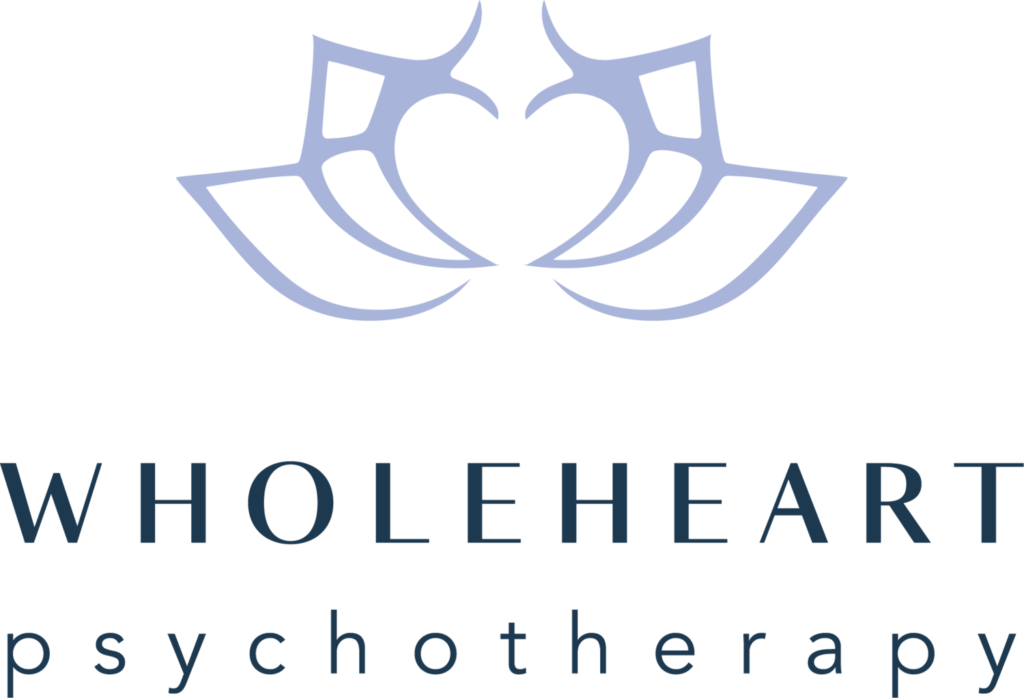Eating Disorder Therapy
(ED)
What is Your Relationship With Food?

Start The Healing Process
Your relationship to food is a sacred and life giving connection. We learn messages about food and self-nurturance over our entire lives through our families, culture, friendships, peer groups, etc. At any point in time, our relationship to food and body can shift- a period of intense stress or extreme changes in life circumstances or a new developmental time of life- can set unhealthy patterns into motion. Puberty, marriage, childbirth, divorce, menopause, trauma, accidents, loss of a loved one, etc all can come with unique challenges which can disrupt our relationship with our food and body.
Starting to explore your relationship to food and body can be a very personal journey. We can help by assessing your relationship with food and body through a lens of beliefs, feelings, and behaviors. We can create a unique plan that helps you change behaviors with food while taking care of and understanding your emotional needs more directly at the same time.
Treatment for eating disorders will be specifically tailored to your needs through an initial assessment followed by a treatment planning session. Psychotherapy or talk therapy is used as a primary mode of treatment for eating disorders. In addition, nutritional counseling, psychiatry, family/ couples counseling and/or group therapy are often needed as well, depending on the level and intensity of the eating disorder. The length of treatment depends on the individuals ability to make behavioral changes with their relationship with food.
Start The Healing Process
Alternative Option To A Treatment Facility
Family Based Therapy
(FBT)
Do you suspect your child has an eating disorder (ED)? Has your child received a recent ED diagnosis and you’re feeling overwhelmed or scared about which treatment modality is most effective? Family Based Treatment (FBT) is an evidence based treatment model that is highly effective. This treatment model may be an alternative option to your child receiving care at a treatment facility, and allows for parents to carry out interventions within the home, with the support of the FBT specialist.

Related Articles & Questions
What is FBT or Family Based Therapy for Eating Disorders?
Eating Disorder Therapy New Client Form Family-Based Therapy (FBT), also known as Maudsley Approach, is an evidence-based treatment for eating disorders, particularly effective for adolescents and young adults with anorexia nervosa (AN). FBT is based...
Learn MoreWhat is Nutritional Therapy for Eating Disorders?
Eating Disorder Therapy New Client Form Nutritional therapy plays a crucial role in the treatment of eating disorders (EDs) and is typically provided by registered dietitians (RDs) or nutritionists who specialize in ED treatment. The...
Learn MoreWhat is involved in an Eating Disorder Treatment Team?
Eating Disorder Therapy New Client Form An eating disorder treatment team typically consists of a group of healthcare professionals with specialized training and expertise in treating eating disorders. This multidisciplinary team approach is essential for...
Learn MoreWhat is HAES or a HAES Approach?
Eating Disorder Therapy New Client Form HAES stands for Health at Every Size. It is a movement and approach to health and well-being that promotes the idea that individuals of all body sizes deserve respect...
Learn MoreWhat is FED NOS or OSFED or UFED?
Eating Disorder Therapy New Client Form “FED NOS” stands for “Feeding or Eating Disorder Not Otherwise Specified.” In the context of eating disorders, this term was used in previous editions of the Diagnostic and Statistical...
Learn MoreWhat is ARFID?
Eating Disorder Therapy New Client Form ARFID stands for Avoidant/Restrictive Food Intake Disorder. It is a relatively new diagnostic category introduced in the DSM-5 (Diagnostic and Statistical Manual of Mental Disorders, 5th Edition) to describe...
Learn MoreWhat is Orthorexia?
Eating Disorder Therapy New Client Form Orthorexia nervosa is a term used to describe a problematic obsession with healthy eating. Unlike other eating disorders like anorexia nervosa or bulimia nervosa, which focus on the quantity...
Learn MoreWhat is Binge Eating Disorder or (BED)?
Eating Disorder Therapy New Client Form Binge eating disorder (BED) is a serious eating disorder characterized by recurrent episodes of consuming large quantities of food in a short period of time, often accompanied by a...
Learn MoreWhat is Bulimia or Bulimia Nervosa?
Eating Disorder Therapy New Client Form Bulimia nervosa is a serious eating disorder characterized by recurrent episodes of binge eating followed by behaviors aimed at compensating for the overeating. These compensatory behaviors can include self-induced...
Learn MoreWhat is Anorexia or Anorexia Nervosa?
Eating Disorder Therapy New Client Form Anorexia nervosa is a serious eating disorder characterized by an intense fear of gaining weight, leading to extreme efforts to control weight and food intake. People with anorexia may...
Learn More
What is Anorexia or Anorexia Nervosa?
Anorexia nervosa is a serious eating disorder characterized by an intense fear of gaining weight, leading to extreme efforts to control weight and food intake. People with anorexia may severely restrict their food intake, engage in excessive exercise, purging, laxative/diuretic use, and may have a distorted body image, seeing themselves as overweight even when they are dangerously underweight.
This disorder can have severe physical and emotional consequences, including organ damage, bone loss, heart problems, and disruptions in normal bodily functions. It often coexists with other mental health conditions such as depression, anxiety, or obsessive-compulsive disorder.
Treatment typically involves a combination of medical care, nutritional counseling, and therapy to address underlying psychological issues. Family support and specialized interventions from healthcare professionals are crucial in helping individuals recover from anorexia nervosa and regain a healthy relationship with food and their bodies.
What is Bulimia or Bulimia Nervosa?
Bulimia nervosa is a serious eating disorder characterized by recurrent episodes of binge eating followed by behaviors aimed at compensating for the overeating. These compensatory behaviors can include self-induced vomiting, misuse of laxatives or diuretics, fasting, or excessive exercise, etc.
Key features of bulimia nervosa include a sense of loss of control during binge eating episodes, feelings of guilt, shame, or distress afterward, and a preoccupation with body shape and weight. Unlike anorexia nervosa, individuals with bulimia nervosa often maintain a relatively normal weight, although they may experience fluctuations.
Bulimia nervosa can lead to serious health complications such as electrolyte imbalances, dehydration, gastrointestinal problems, and dental issues due to frequent vomiting. Like anorexia nervosa, it often coexists with other mental health conditions such as depression, anxiety, or substance abuse disorders.
Treatment for bulimia nervosa typically involves a combination of therapies, including cognitive-behavioral therapy (CBT), Dialectical Behavior Therapy (DBT), mindful self- compassion, Internal Family Systems (IFS) and nutritional counseling, and sometimes medication to address underlying psychological issues and stabilize mood. Family involvement and support from healthcare professionals are also important components of treatment to help individuals recover and develop healthier relationships with food and compassionate attitudes toward their bodies.
What is Binge Eating Disorder or (BED)
Binge eating disorder (BED) is a serious eating disorder characterized by recurrent episodes of consuming large quantities of food in a short period of time, often accompanied by a sense of loss of control during the episode. Unlike bulimia nervosa, individuals with BED do not regularly engage in compensatory behaviors such as vomiting or excessive exercise to counteract the binge eating episodes.
Key features of binge eating disorder include:
- Binge eating episodes: Consuming an unusually large amount of food in a discrete period of time (e.g., within two hours).
- Loss of control: Feeling a lack of control over eating during the binge episode, such as feeling unable to stop eating or regulate what or how much is eaten.
- Emotional distress: Binge eating is often associated with feelings of guilt, shame, or disgust afterward, which can exacerbate the cycle of binge eating.
- Frequency: Binge eating episodes typically occur at least once a week over a period of several months.
People with binge eating disorder may eat rapidly, eat alone due to embarrassment about the quantity of food being consumed, and may eat until they feel uncomfortably full. BED can also look like all day grazing on food out of an emotional need resulting in unusually large amounts of food being consumed outside of meal time. BED can lead to significant physical health issues such as high blood pressure, diabetes, and cardiovascular disease. It is also associated with psychological distress and can co-occur with other mental health conditions such as depression, anxiety, and substance abuse disorders.
Treatment for binge eating disorder often involves psychotherapy, such as cognitive-behavioral therapy (CBT) or interpersonal therapy (IPT), which helps individuals address the emotional triggers and dysfunctional thoughts associated with binge eating. Nutritional counseling and support groups may also be beneficial. In some cases, medications may be prescribed to help manage symptoms and support recovery.
What is Orthorexia?
Orthorexia nervosa is a term used to describe a problematic obsession with healthy eating. Unlike other eating disorders like anorexia nervosa or bulimia nervosa, which focus on the quantity of food consumed, orthorexia is characterized by an excessive preoccupation with the quality and purity of food.
Individuals with orthorexia are often overly concerned with eating foods that they consider to be “pure,” “clean,” or “healthy.” They may meticulously plan their meals, avoid certain food groups (such as foods containing artificial additives, preservatives, or genetically modified ingredients), and may spend significant amounts of time researching and preparing their food. This preoccupation with healthy eating can become so extreme that it interferes with daily life, relationships, and overall well-being.
Key features of orthorexia nervosa include:
- Obsessive focus: Individuals may become fixated on the nutritional content and quality of food to the point where it dominates their thoughts and behaviors.
- Rigid dietary rules: They may impose strict rules about what they can and cannot eat, often eliminating entire food groups or specific foods they deem unhealthy.
- Physical and psychological distress: Despite the pursuit of health, orthorexia can lead to nutritional deficiencies, weight loss, social isolation, anxiety, and feelings of guilt or shame if they deviate from their strict eating regimen.
It’s important to note that orthorexia is not currently recognized as a formal diagnosis in the Diagnostic and Statistical Manual of Mental Disorders (DSM-5). However, it is increasingly recognized as a problematic behavior that can significantly impact an individual’s physical and mental health.
Treatment for orthorexia typically involves psychotherapy, particularly Radically Open Dialectical behavioral therapy (RODBT), to help individuals challenge and modify their rigid beliefs about food, reduce anxiety related to eating, and develop a healthier relationship with food and their bodies. Nutritional counseling may also be beneficial to ensure balanced and adequate eating habits.
What is ARFID?
ARFID stands for Avoidant/Restrictive Food Intake Disorder. It is a relatively new diagnostic category introduced in the DSM-5 (Diagnostic and Statistical Manual of Mental Disorders, 5th Edition) to describe individuals who have significant challenges with eating that are not explained by concerns about body weight or shape (as in anorexia nervosa) or by a lack of available food (as in poverty).
Key features of ARFID include:
- Avoidance or restriction of food intake: Individuals with ARFID may avoid certain foods or entire food groups based on sensory characteristics (e.g., texture, taste, smell), fear of aversive consequences (e.g., choking, vomiting), or lack of interest in eating.
- Nutritional deficiencies or dependence on nutritional supplements: The restrictive eating patterns seen in ARFID can lead to inadequate nutrition and reliance on nutritional supplements to meet dietary needs.
- Interference with daily functioning: ARFID can significantly impact an individual’s ability to participate in social, occupational, or other activities that involve eating.
- Onset in childhood or adolescence: ARFID often begins in childhood, although it can persist into adulthood if not properly treated.
Treatment for ARFID typically involves a multidisciplinary approach that includes medical monitoring, nutritional counseling, and psychological intervention. Cognitive-behavioral therapy (CBT) is often used to help individuals expand their range of acceptable foods, challenge irrational beliefs about food, and reduce anxiety related to eating. Occupational therapy and sensory integration techniques may also be helpful, especially for individuals with sensory sensitivities related to food.
Early intervention is important in ARFID to prevent long-term nutritional deficiencies, impaired growth (in children and adolescents), and the development of other mental health conditions. Working closely with healthcare professionals, including dietitians, psychologists, and physicians, can help individuals with ARFID develop healthier eating habits and improve their overall quality of life.
What is FED NOS or OSFED or UFED?
“FED NOS” stands for “Feeding or Eating Disorder Not Otherwise Specified.” In the context of eating disorders, this term was used in previous editions of the Diagnostic and Statistical Manual of Mental Disorders (DSM-IV) to categorize eating disorders that did not meet the specific criteria for anorexia nervosa, bulimia nervosa, or binge eating disorder.
The DSM-5, has replaced the term “Feeding or Eating Disorder Not Otherwise Specified” with “Other Specified Feeding or Eating Disorder” (OSFED) and “Unspecified Feeding or Eating Disorder” (UFED). These changes were made to provide more specific diagnostic criteria and to better capture the range of symptoms and presentations seen in clinical practice.
Other Specified Feeding or Eating Disorder (OSFED) includes individuals who have symptoms of an eating disorder that cause significant distress or impairment but do not fully meet the criteria for anorexia nervosa, bulimia nervosa, or binge eating disorder. Examples include atypical anorexia nervosa (where a person meets all criteria except for weight), subthreshold bulimia nervosa (where binge eating or compensatory behaviors occur less frequently), and purging disorder (where a person engages in purging behaviors without binge eating).
Unspecified Feeding or Eating Disorder (UFED) applies to cases where symptoms characteristic of an eating disorder cause significant distress or impairment but do not fit into any specific category or where there is insufficient information to make a more specific diagnosis.
These categories under OSFED and UFED are important because they acknowledge that eating disorders can vary widely in presentation and severity, and individuals may still need treatment and support even if they do not meet the strict criteria for the main diagnostic categories. Treatment for OSFED and UFED typically involves similar approaches as those used for the more recognized eating disorders, including psychotherapy, nutritional counseling, and in some cases, medication.
This disorder can have severe physical and emotional consequences, including organ damage, bone loss, heart problems, and disruptions in normal bodily functions. It often coexists with other mental health conditions such as depression, anxiety, or obsessive-compulsive disorder.
Treatment typically involves a combination of medical care, nutritional counseling, and therapy to address underlying psychological issues. Family support and specialized interventions from healthcare professionals are crucial in helping individuals recover from anorexia nervosa and regain a healthy relationship with food and their bodies.
What is HAES or a HAES Approach?
HAES stands for Health at Every Size. It is a movement and approach to health and well-being that promotes the idea that individuals of all body sizes deserve respect and can pursue health behaviors that are independent of attempts to change their body size or shape.
Key principles of Health at Every Size include:
- Weight inclusivity: Accepting and respecting the diversity of body shapes and sizes, and rejecting the idea that weight is a determinant of health or moral worth.
- Health enhancement: Promoting health policies and practices that support health and well-being without focusing on weight loss as a primary goal.
- Respectful care: Providing compassionate, respectful healthcare that addresses the needs of individuals regardless of their body size or shape.
- Eating for well-being: Encouraging flexible, individualized eating based on hunger, satiety, nutritional needs, and pleasure, rather than restrictive dieting or food rules.
- Life-enhancing movement: Supporting physical activities that are enjoyable, sustainable, and promote overall well-being, rather than focusing on exercise as a means to lose weight.
The Health at Every Size approach challenges the conventional belief that weight loss is necessary for health improvement and emphasizes the importance of promoting positive health behaviors, such as balanced nutrition, regular physical activity, and emotional well-being, for people of all sizes. It aims to reduce weight stigma and discrimination in healthcare settings and society at large, recognizing that health is a complex and multifaceted concept influenced by various factors beyond weight. Proponents of HAES assert that HAES focuses on holistic health and well-being rather than solely on weight, advocating for inclusive and supportive healthcare practices.
What is involved in an Eating Disorder Treatment Team?
An eating disorder treatment team typically consists of a group of healthcare professionals with specialized training and expertise in treating eating disorders. This multidisciplinary team approach is essential for providing comprehensive care that addresses the physical, psychological, and nutritional aspects of eating disorders. The composition of an eating disorder treatment team may vary depending on the specific needs of the individual and the resources available, but commonly includes the following professionals:
- Physician and/or Psychiatrist: A medical doctor who specializes in the diagnosis and treatment of eating disorders. They oversee medical management, assess physical health, monitor vital signs, and prescribe medications if necessary.
- Psychologist or Therapist: A mental health professional trained in psychotherapy, such as cognitive-behavioral therapy (CBT), dialectical behavior therapy (DBT), or interpersonal therapy (IPT), Internal family Systems (IFS), and RODBT. They help individuals address underlying psychological factors contributing to the eating disorder, manage emotions, and develop coping strategies.
- Registered Dietitian/Nutritionist: A nutrition expert who provides nutritional assessment, education, and counseling tailored to the needs of individuals with eating disorders. They help establish balanced eating habits, address nutrient deficiencies, and support weight restoration or stabilization.
- Social Worker or Counselor: Provides supportive counseling, helps navigate social and interpersonal challenges related to the eating disorder, and assists with accessing community resources and support networks.
- Pediatrician or Adolescent Medicine Specialist: For younger individuals, especially adolescents, a pediatrician or adolescent medicine specialist may be part of the team to address developmental and growth concerns.
- Physical Therapist or Exercise Physiologist: They may assist in developing a healthy approach to physical activity, addressing compulsive exercise behaviors, and promoting safe and enjoyable movement.
- Other Specialists: Depending on individual needs, the team may include other specialists such as gastroenterologists (for gastrointestinal issues), endocrinologists (for hormonal concerns), and dentists (for dental health).
Collaboration and communication among team members are crucial to ensure coordinated and effective care. Treatment plans are typically tailored to each individual’s specific needs, goals, and severity of the eating disorder. Family members may also be involved in treatment to provide support and assist in the recovery process, especially in cases involving adolescents or when family dynamics play a significant role in the eating disorder.
Overall, an integrated and multidisciplinary approach ensures that individuals with eating disorders receive comprehensive care addressing both the physical and psychological aspects of their condition, promoting long-term recovery and improved quality of life.
What is Nutritional Therapy for Eating Disorders?
Nutritional therapy plays a crucial role in the treatment of eating disorders (EDs) and is typically provided by registered dietitians (RDs) or nutritionists who specialize in ED treatment. The goals of nutritional therapy for EDs are multifaceted and tailored to the individual’s specific needs, stage of recovery, and overall health. Here are key aspects of nutritional therapy for EDs:
- Nutritional Assessment
- Initial Assessment: A comprehensive evaluation of the individual’s current eating habits, nutritional intake, medical history, weight history, and physical health.
- Identification of Nutritional Deficiencies: Assessing for any nutrient deficiencies or imbalances that may have arisen due to disordered eating behaviors.
- Meal Planning and Nutritional Rehabilitation
- Meal Plans: Developing structured meal plans that aim to restore regular eating patterns, normalize eating behaviors, and promote balanced nutrition. This can look like mechanical eating to restore the natural intake rhythms that get disrupted in the eating disorder before people can rely on hunger/fullness cues exclusively.
- Caloric Needs: Determining appropriate caloric intake based on age, gender, activity level, and nutritional needs to support physical recovery and weight restoration if necessary.
- Balanced Nutrition: Emphasizing the importance of a balanced diet that includes adequate carbohydrates, proteins, fats, vitamins, and minerals to support overall health and recovery.
- Education and Counseling
- Nutrition Education: Providing education about the role of nutrients in the body, the impact of disordered eating on health, and the benefits of regular and adequate nutrition.
- Cognitive-Behavioral Approaches: Using cognitive-behavioral strategies to challenge distorted beliefs about food, body image, and nutrition.
- Meal Support: Offering guidance and support during meals to help individuals overcome anxiety, fear, or guilt associated with eating.
- Behavioral Strategies
- Meal Timing and Structure: Establishing regular meal times and promoting structured eating patterns to prevent skipping meals or engaging in disordered eating behaviors.
- Food Exposure: Gradual exposure to feared or avoided foods to reduce anxiety and expand food choices.
- Mindful Eating: Encouraging mindful eating practices to enhance awareness of hunger and fullness cues, promote satisfaction from eating, and improve overall relationship with food.
- Monitoring and Support
- Ongoing Monitoring: Regularly assessing progress, adjusting meal plans as needed, and monitoring physical health indicators such as weight, vital signs, and laboratory values.
- Collaboration with Treatment Team: Working collaboratively with therapists, physicians, and other healthcare providers to ensure integrated care and address both nutritional and psychological aspects of recovery.
- Long-Term Maintenance
- Relapse Prevention: Providing strategies and support to help maintain healthy eating behaviors, manage stressors, and prevent relapse.
- Lifestyle Changes: Supporting individuals in adopting sustainable lifestyle changes that promote long-term health and well-being beyond the acute phase of treatment.
Considerations
- Individualized Approach: Recognizing that nutritional needs and challenges vary widely among individuals with EDs, requiring personalized and flexible treatment plans.
- Family Involvement: Involving family members or caregivers in nutritional therapy when appropriate to provide additional support and promote adherence to meal plans.
- Recovery Timeline: Understanding that nutritional rehabilitation and recovery from EDs are gradual processes that require patience, persistence, and ongoing support.
Overall, nutritional therapy is an integral component of comprehensive treatment for eating disorders, addressing nutritional rehabilitation, promoting physical health, and supporting overall recovery and well-being. It is essential that nutritional interventions are delivered within a multidisciplinary treatment team framework to ensure coordinated care and optimize outcomes for individuals with eating disorders.
What is FBT or Family Based Therapy for Eating Disorders?
Family-Based Therapy (FBT), also known as Maudsley Approach, is an evidence-based treatment for eating disorders, particularly effective for adolescents and young adults with anorexia nervosa (AN). FBT is based on the premise that family dynamics and interactions play a crucial role in the development and maintenance of eating disorders. Here’s an overview of how FBT works:
Phases of Family-Based Therapy (FBT)
- Phase 1: Weight Restoration (or Normalization of Eating):
- Goals: The primary goal of this phase is to interrupt the eating disorder behaviors and achieve weight restoration to a healthy level.
- Role of Family: Parents take charge of planning and supervising meals, ensuring the adolescent/young adult consumes adequate nutrition to support physical recovery.
- Therapeutic Approach: Therapists support parents in assuming this caregiving role and provide education about the eating disorder and its impact.
- Phase 2: Return of Control:
- Goals: Gradually, responsibility for eating and self-care is shifted back to the adolescent/young adult.
- Role of Family: Parents help their child regain autonomy around eating while continuing to provide emotional support and guidance.
- Therapeutic Approach: Therapists facilitate discussions within the family to address underlying issues, improve communication, and strengthen relationships.
- Phase 3: Establishing Healthy Adolescent Development:
- Goals: Focus shifts to supporting the adolescent/young adult in resuming normal developmental tasks and activities.
- Role of Family: Parents continue to provide a supportive environment while encouraging their child’s independence and autonomy.
- Therapeutic Approach: Therapists work with the family to address any remaining issues and help prepare the adolescent/young adult for long-term recovery.
Key Principles of Family-Based Therapy (FBT)
- Externalization of the Disorder: FBT views the eating disorder as separate from the individual, helping families understand that the behaviors are symptoms that need to be addressed collaboratively.
- Empowerment of Parents: Parents are seen as crucial allies in the treatment process, as they take an active role in refeeding and supporting their child’s recovery.
- Non-Blaming Approach: FBT focuses on reducing guilt and shame, instead emphasizing the importance of working together as a family unit to overcome the eating disorder.
Effectiveness and Considerations
- Evidence-Based: FBT has been extensively studied and shown to be effective, particularly for adolescents with anorexia nervosa. It can also be adapted for use with bulimia nervosa and other eating disorders.
- Family Involvement: Success often hinges on the commitment and involvement of the entire family in treatment sessions and meal planning.
- Suitability: While effective for many, FBT may not be suitable for every individual or family situation. Therapists may need to assess readiness for FBT and consider alternative approaches as needed.
Overall, Family-Based Therapy is a structured, supportive approach that recognizes the critical role of family dynamics in the treatment of eating disorders. By empowering parents and involving them actively in the recovery process, FBT aims to restore healthy eating behaviors and facilitate long-term recovery for adolescents and young adults struggling with eating disorders.
WholeHeart Psychotherapy
Feel free to contact us and ask us anything.
Live From Your Heart, Wholly And Authentically.
CEU Workshops
Workshops are longer sessions designed to help deliver a large amount of content in a short period of time. Oftentimes, workshops can last hours to days and are provided in a group format to deliver an intervention in a detailed and often experiential way.





Feedback:






